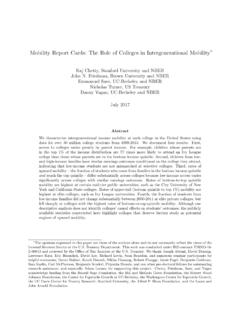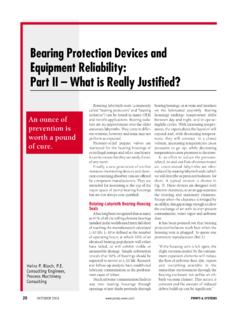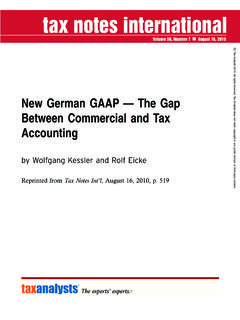Transcription of Race and Economic Opportunity in the United States
1 THE EQUALITY OF Opportunity PROJECT. Race and Economic Opportunity in the United States Executive Summary Raj Chetty, Nathaniel Hendren, Maggie Jones, and Sonya R. Porter Racial disparities in income and other outcomes are among the most visible and persistent features of American society. The sources of these disparities have been studied and debated for decades, with explanations ranging from residential segregation and discrimination to differences in family structure and genetics. Most previous work on racial disparities has studied inequality within a single generation of people.
2 In a new study, we analyze how racial gaps change across Using de-identified data covering 20 million children and their parents, we show how race currently shapes Opportunity in the and how we can reduce racial disparities going Finding #1: Hispanic Americans are moving up in the income distribution across generations, while Black Americans and American Indians are not. We study five racial and ethnic groups: people of Hispanic ethnicity and non- Hispanic whites, blacks, Asians, and American Indians.
3 By analyzing rates of upward and downward mobility across generations for these groups, we quantify how their incomes change and predict their future earnings trajectories. Children's Incomes vs. Parents' Incomes, by Race and Ethnicity 1 This summary and all figures that appear below are based on the paper Race and Economic Opportunity in the United States : An Intergenerational Perspective. The views expressed in this executive summary are not necessarily those of the Census Bureau. The statistical summaries reported in these slides have been cleared by the Census Bureau's Disclosure Review Board release authorization number CBDRB-FY18-195.
4 2. The dataset used for the analysis includes children born in the or those whose parents came to the as authorized immigrants while they were children. Race and Economic Opportunity in the United States Executive Summary Hispanic Americans have rates of upward income mobility across generations that are slightly below those of whites. Hispanics are therefore on a path to moving up substantially in the income distribution across generations, potentially closing much of the present gap between their incomes' and those of white Americans.
5 Asian immigrants have much higher levels of upward mobility than all other groups, but Asian children whose parents were born in the have levels of intergenerational mobility similar to white children. This makes it more difficult to predict the trajectory of Asian Americans' incomes, but Asians appear likely to remain at income levels comparable to or above white Americans in the long run. In contrast, black and American Indian children have substantially lower rates of upward mobility than the other racial groups.
6 For example, black children born to parents in the bottom household income quintile have a chance of rising to the top quintile of household income, compared with for whites. Growing up in a high-income family provides Black and American Indian no insulation from these disparities. American children have much higher Indian and black children have much higher rates of downward mobility rates of downward mobility than other groups. than other groups. Black Black children born to parents in the top children born to parents in the income quintile are almost as likely to fall to the bottom quintile as they are to remain in top income quintile are the top quintile.
7 By contrast, white children almost as likely to fall to the born in the top quintile are nearly five times as bottom quintile as they are to likely to stay there as they are to fall to the remain in the top quintile. bottom. Because of these differences in Economic mobility, blacks and American Indians are stuck in place across generations. Their positions in the income distribution are unlikely to change without efforts to increase their rates of upward mobility. Changes in Income Across Generations, by Racial Group The Equality of Opportunity Project 2.
8 Race and Economic Opportunity in the United States Executive Summary Finding #2: The black-white income gap is entirely driven by differences in men's, not women's, outcomes. Among those who grow up in families with comparable incomes, black men grow up to earn substantially less than the white men. In contrast, black women earn slightly more than white women conditional on parent income. Moreover, there is little or no gap in wage rates or hours of work between black and white women. We find analogous gender differences in other outcomes: black-white gaps in high-school completion rates, college attendance rates, and incarceration are all substantially larger for men than for women.
9 Black women have higher college attendance rates than white men, conditional on parental income. For men, the gap in incarceration is particularly stark: 21% of black men born to the lowest- income families are incarcerated on a given day, far higher than for any other subgroup. Children's Incomes vs. Parents' Incomes, for Black and White Men and Women Finding #3: Differences in family characteristics parental marriage rates, education, wealth and differences in ability explain very little of the black-white gap.
10 Black children are much more likely to grow up in single parent households with less wealth and parents with lower levels of education all factors that have received attention as potential explanations for black-white disparities. But, when we compare the outcomes of black and white men who grow up in two- parent families with similar levels of income, wealth, and education, we continue to find that the black men still have substantially lower incomes in adulthood. Hence, differences in these family characteristics play a limited role in explaining the gap.






